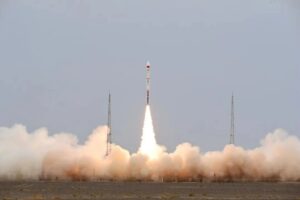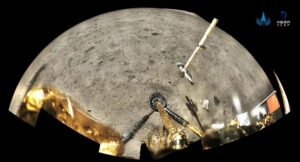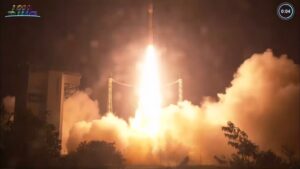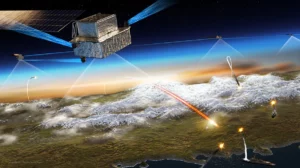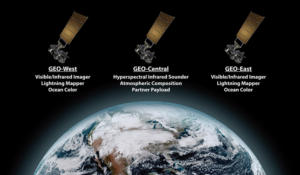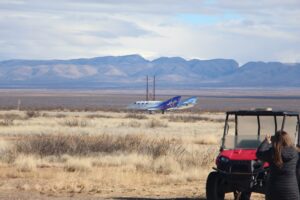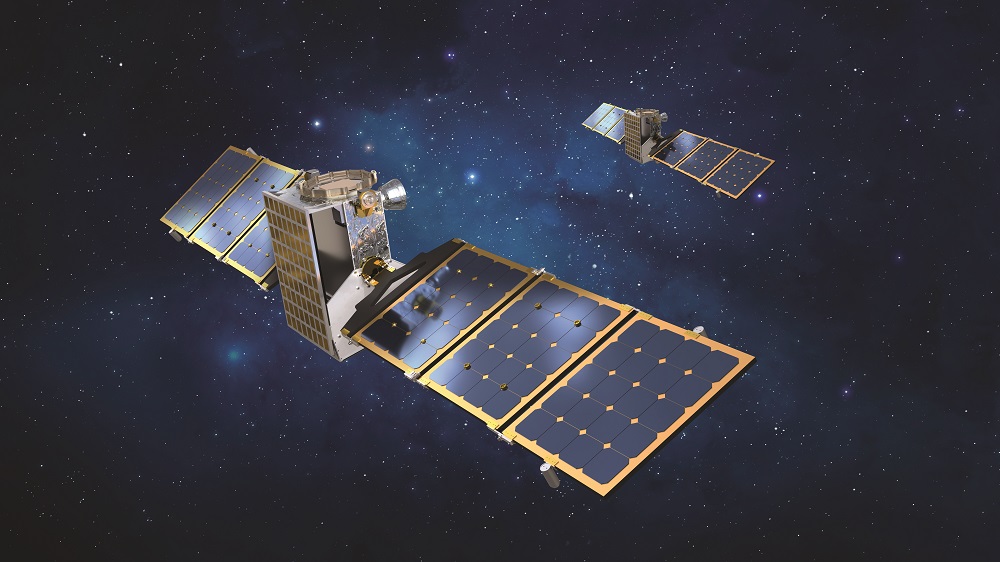
ORLANDO, Fla. — NASA is hosting a workshop later this month to learn about options for low-cost missions to an asteroid that will make a close approach to the Earth in 2029, a move that has confused some scientists who believe a shelved smallsat mission can meet NASA’s needs.
The Apophis 2029 Innovation Listening Workshop, to be held Feb. 7 at NASA Headquarters, will study what the agency calls “innovative approaches for a low-cost mission” to Apophis, a near Earth asteroid. Apophis will make a close flyby of the Earth in April 2029, passing closer to the Earth than the geostationary belt but posing no impact risk.
The workshop will feature a public briefing followed by one-on-one discussions with interested organizations. NASA added that there are no solicitations or even a formal request for information associated with the workshop.
The workshop is not being led by NASA’s Science Mission Directorate, which hosts its planetary science activities as well as the Planetary Defense Coordination Office, but instead by NASA’s chief technologist within the Office of Technology, Policy and Strategy.
Lindley Johnson, NASA’s planetary defense officer, said at a Jan. 30 meeting of the Small Bodies Assessment Group (SBAG) that his office was supporting the workshop. “Their objective is to engage the public and private sectors in innovative, low-cost missions during the Earth flyby of Apophis,” he said. The focus of the workshop will be the one-on-one meetings, he said, for “small companies, nontraditional partners with NASA to present their ideas about how this could be done in a low-cost approach.”
NASA already has one mission to study Apophis. After the OSIRIS-REx mission delivered asteroid samples to Earth in September, the main spacecraft flew by Earth on an extended mission rechristened OSIRIS-APEX. It will rendezvous with Apophis immediately after the April 2029 flyby, studying it for the next 18 months. However, there is interest in sending a mission to Apophis before the Earth flyby to better understand what changes the gravitational forces of the flyby made to the asteroid.
One proposal is to repurpose the two smallsats built for Janus, a NASA mission that would have sent the spacecraft on flybys of binary asteroids. Janus, part of the agency’s Small Innovative Missions for Planetary Exploration (SIMPLEx) program, was to launch as a secondary payload on the Psyche asteroid mission in 2022.
However, when problems with Psyche delayed its launch by more than a year, Janus could no longer carry out its original mission. With no viable alternative missions possible launching with Psyche, NASA removed Janus from that launch and formally canceled the mission in July.
The two spacecraft, already assembled and going through final testing when Psyche was delayed, are being prepared to go into long-term storage at NASA’s Langley Research Center, said Dan Scheeres, principal investigator for Janus at the University of Colorado, in an SBAG presentation Jan. 31. That involves partially disassembling the spacecraft to store batteries, solar panels, propulsion system and instruments separately: “You just can’t put it into a box and ship it.”
The Janus team has looked at alternative missions for the spacecraft that include going to Apophis. Several options are available, he said, with trajectories that take the spacecraft out to the Earth-sun L-2 Lagrange point followed by a lunar flyby to set up an Apophis flyby “well in advance” of the asteroid’s close approach to the Earth. “It’s still in our wheelhouse,” he said.
The Janus spacecraft carry optical and infrared instruments designed for “fast flyby science” that would include Apophis, he said, comparing it to the flyby of a small main belt asteroid, Dinkinesh, by NASA’s Lucy spacecraft in November. Once in storage, the spacecraft could be reassembled, tested and launched in about 18 months.
The challenge, he and other said at the SBAG meeting, was funding. NASA’s planetary programs are in what Scheeres called a “no new start” situation where the agency is not starting any new missions, including one that would use the repurposed Janus spacecraft.
“We recognize that the 2029 close approach of Apophis really presents a unique opportunity,” said Lori Glaze, director of NASA’s planetary science division, at the SBAG meeting Jan. 30. “Our budget situation is really, really challenging, and that is a reality that we have to live within.”
She said that the Janus team had briefed her on using the spacecraft for an Apophis flyby. “That is one of the many ideas that have come to us,” she said, but returned to the budget issues. “You can have the will, but without the funding it makes it really challenging.”
Some scientists at the SBAG meeting wondered why, given the Janus option but also the budget constraints, why NASA was holding the workshop at all, rather than find a way to repurpose Janus for an Apophis flyby.
Thomas Statler, a program scientist in the planetary science division, said at SBAG Jan. 31 that the agency knows there are multiple ideas for an Apophis flyby mission. “The agency doesn’t want to take a stance where it appears unreceptive to a good idea,” he said. “That is the motivation for the listening workshop.”
Scheeres said he planned to attend the Apophis workshop and meet with agency officials to “make sure they are fully aware of what they will be sitting on.”
- SEO Powered Content & PR Distribution. Get Amplified Today.
- PlatoData.Network Vertical Generative Ai. Empower Yourself. Access Here.
- PlatoAiStream. Web3 Intelligence. Knowledge Amplified. Access Here.
- PlatoESG. Carbon, CleanTech, Energy, Environment, Solar, Waste Management. Access Here.
- PlatoHealth. Biotech and Clinical Trials Intelligence. Access Here.
- Source: https://spacenews.com/nasa-workshop-to-examine-options-for-apophis-asteroid-mission/
- :has
- :is
- :not
- :where
- $UP
- 2022
- 30
- 31
- 7
- a
- About
- activities
- added
- After
- agency
- All
- already
- also
- alternative
- an
- and
- any
- appears
- approach
- approaches
- April
- ARE
- AS
- assembled
- assessment
- associated
- Asteroid
- asteroids
- At
- attend
- available
- aware
- batteries
- BE
- before
- being
- believe
- Better
- bodies
- Box
- Briefing
- budget
- built
- but
- by
- called
- Calls
- CAN
- canceled
- carry
- Center
- challenge
- challenging
- Changes
- chief
- Close
- closer
- Colorado
- come
- Companies
- comparing
- confused
- constraints
- coordination
- could
- Defense
- Delayed
- delivered
- designed
- Director
- discussions
- Division
- Doesn’t
- done
- during
- earth
- engage
- Even
- examine
- exploration
- extended
- Feature
- Feb
- final
- Find
- fla
- Focus
- followed
- For
- Forces
- formal
- from
- fully
- funding
- given
- Go
- going
- good
- gravitational
- Group
- had
- Have
- he
- Headquarters
- Held
- her
- his
- holding
- hosting
- hosts
- How
- However
- HTTPS
- idea
- ideas
- immediately
- Impact
- in
- include
- Including
- information
- Innovation
- innovative
- instead
- instruments
- interest
- interested
- into
- involves
- issues
- IT
- ITS
- Jan
- Johnson
- jpg
- just
- knows
- later
- launch
- launched
- launching
- LEARN
- Led
- Listening
- live
- long-term
- longer
- looked
- lori
- low-cost
- Lunar
- made
- Main
- make
- MAKES
- many
- Meet
- meeting
- meetings
- Mission
- missions
- Month
- months
- more
- Motivation
- move
- multiple
- Nasa
- Near
- needs
- New
- next
- no
- nontraditional
- November
- objective
- of
- Office
- Officer
- officials
- on
- once
- ONE
- Opportunity
- Option
- Options
- or
- organizations
- original
- Other
- our
- out
- panels
- part
- partners
- Passing
- Planetary science
- planned
- plato
- Plato Data Intelligence
- PlatoData
- Point
- policy
- possible
- prepared
- present
- presentation
- presents
- Principal
- private
- problems
- Program
- Programs
- proposal
- propulsion
- public
- put
- rather
- Reality
- really
- recognize
- Removed
- request
- research
- Risk
- Said
- Science
- Scientist
- scientists
- secondary
- Sectors
- sending
- sent
- September
- set
- several
- she
- ship
- Simplex
- Sitting
- situation
- small
- solar
- solar panels
- some
- spacecraft
- stance
- Starting
- Still
- storage
- store
- Strategy
- Study
- Studying
- Supporting
- sure
- system
- Take
- team
- technologist
- Technology
- tested
- Testing
- than
- that
- The
- their
- There.
- they
- this
- Through
- to
- two
- understand
- unique
- university
- us
- use
- using
- viable
- want
- was
- Way..
- we
- WELL
- What
- when
- which
- WHO
- why
- will
- with
- within
- without
- workshop
- would
- year
- zephyrnet

